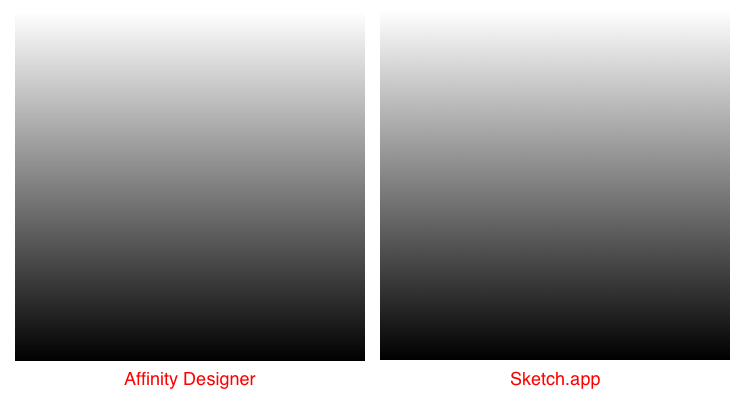Gradient For Mac
A gradient is a graduated blend between two or more colors or between two tints of the same color. The output device you use affects how gradients color separate. Gradients can include Paper, process colors, spot colors, or mixed ink colors using any color mode. Gradients are defined by a series of color stops in the gradient bar. A stop is the point at which a gradient changes from one color to the next, and is identified by a color square under the gradient bar. By default, a gradient starts with two colors and a midpoint at 50%. Within a single text frame, you can create multiple ranges of gradient text alongside default black text and color text.

A gradient’s endpoints are always anchored in relation to the bounding box of the gradient’s path or text frame. Individual text characters display the part of the gradient over which they are positioned.
If you resize the text frame or make other changes that cause text characters to reflow, the characters are redistributed across the gradient, and the colors of individual characters change accordingly. Use the Gradient tool to reset the gradient’s endpoints, so that they span only the characters you selected when you applied the gradient. Select the text and convert it to outlines (editable paths), and then apply a gradient to the resulting outlines. This is the best option for a short run of display type in its own text frame.

The gradient will be permanently anchored to the outlines, not the text frame, and the outlines will continue to flow with the rest of the text. However, the outlines will function as a single inline graphic within the text frame, so you won’t be able to edit the text. Also, typographic options will no longer apply; for example, text converted to outlines will not hyphenate.
Fxtran22: Is there an elegant way to display the angle or the gradient from the 3D object or do I have to calculate it manually? Yes an elegant display in Rhino does exist. Its called draft angle analysis ( menu analysissurfacedraft angle) the draft angle is calculated relative to the cplane z-axis and you would want to look at angles relative to horizontal so you need to use the compliment of your angle.
For instance if you set the angle to 87 to -87 anything that is out of the range 3 to -3 off horizontal will show up. Hi, Analyzing the path incline is one thing, but of course it is better to construct it at a constant gradient in the first place. Here is a method to approximate it on a cone-like surface. Suppose you want a constant gradient of 10 degrees. Below are the steps to create a set of point objects at every 10 degrees rotation (nothing to do with the gradient, just an easy number that happens to be the same). Draw the base circle,the axis and the top circle for reference.

Draw a chord line between the front quad points of both circles. Rotate the chord line 5 deg. Anti clockwise. Copy/rotate the chord line 10 deg.
Gradient For Color #8a221e
Android app emulator online. Connect one or both of the lines with the axis to find the top of the cone. Concerning the fact that our project will be build in the next few years we need to consider the possibility to build the object. So the remark from maxz is indeed a very important one. Having a constant gradient in every part of the ramp is probably essential. Also thanks for the effort.
It is even more complicated in reality because the ramp will consist of different spirals on each level of the building. Considering the building laws with the gradient we will then play with the lenght of each spiral (which leads to different turns per level).
For now I will stick with the given tips. Next year we will know more about the ramp. Thanks to everyone and a merry Christmas.